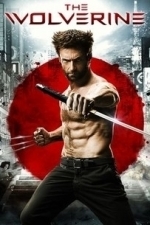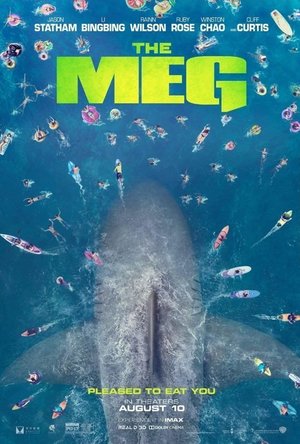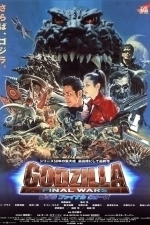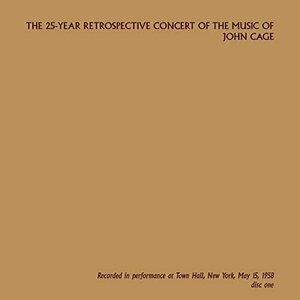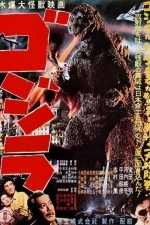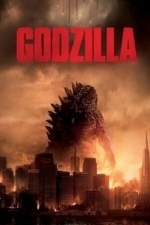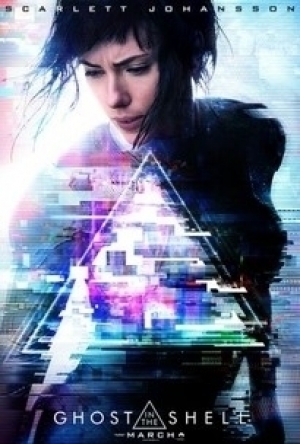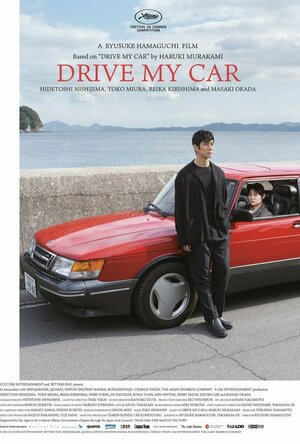Search
Search results
Debbiereadsbook (1444 KP) rated Nine Small Sips (Tales Of Bryant #2) in Books
Jun 28, 2019
my only fault? No Brian!
Independent reviewer for Archaeolibrarian, I was gifted my copy of this book.
This is NOT a stand alone, you really MUST read Tales of Bryant before this one, it is a continuation of Isamu and Brian’s story.
Brian and Isamu have a wedding coming up, and with an over sensitive-to-change wedding planner, a grandmother who demands traditions and a job that could take Isamu away from Brian so soon after their wedding, things are not going to plan!
Again, only the fact that Brian does not have a say is the only fault I can find with this book!
Adrian, the wedding planner, provides hysterical moments, that made me laugh out loud, cos the man simply does NOT like to change his wedding plans. But as Brian points out, it is NOT Adrian’s wedding, it is Isamu and Brian’s wedding, and Isamu needs to stand his ground.
Isamu’s grandmother and parents provide the serious side to this tale. Baba wants Isamu to embrace his Japanese heritage and include a ceremony that would honour his grandfather. I loved Isamu’s family. While they were still unsure about the age gap, they could see that Brian loves Isamu, and Isamu loves Brian.
We catch up with Isamu’s boss, Canada, oh, sorry, Caiden (love that Brian calls him Canada!) and with Isamu’s friend, Devon. Devon and Caiden have instant and powerful attraction, and I hope they get a tale of their own!
Its sexy and steamy in the most sweetest way, not quite as sweet as Tales of Bryant but still sugar rush enducing.
Like I said, just the fact that Brian isn’t given a voice, is the only reason I can’t stretch to 5 stars, and I am sorry for that!
4 very good stars
**same worded review will appear elsewhere**
This is NOT a stand alone, you really MUST read Tales of Bryant before this one, it is a continuation of Isamu and Brian’s story.
Brian and Isamu have a wedding coming up, and with an over sensitive-to-change wedding planner, a grandmother who demands traditions and a job that could take Isamu away from Brian so soon after their wedding, things are not going to plan!
Again, only the fact that Brian does not have a say is the only fault I can find with this book!
Adrian, the wedding planner, provides hysterical moments, that made me laugh out loud, cos the man simply does NOT like to change his wedding plans. But as Brian points out, it is NOT Adrian’s wedding, it is Isamu and Brian’s wedding, and Isamu needs to stand his ground.
Isamu’s grandmother and parents provide the serious side to this tale. Baba wants Isamu to embrace his Japanese heritage and include a ceremony that would honour his grandfather. I loved Isamu’s family. While they were still unsure about the age gap, they could see that Brian loves Isamu, and Isamu loves Brian.
We catch up with Isamu’s boss, Canada, oh, sorry, Caiden (love that Brian calls him Canada!) and with Isamu’s friend, Devon. Devon and Caiden have instant and powerful attraction, and I hope they get a tale of their own!
Its sexy and steamy in the most sweetest way, not quite as sweet as Tales of Bryant but still sugar rush enducing.
Like I said, just the fact that Brian isn’t given a voice, is the only reason I can’t stretch to 5 stars, and I am sorry for that!
4 very good stars
**same worded review will appear elsewhere**
Gareth von Kallenbach (980 KP) rated The Wolverine (2013) in Movies
Aug 6, 2019
In 2009, we were treated to the origin story for one of Marvel’s most beloved characters: The Wolverine. Enthusiasm for the story turned to discord and malcontent for most, but if you had the ability to look past the inadequacies found in most Marvel silver-screen adaptations (as I did), then at least you would have enjoyed seeing the comic come to life.
Here in 2013, Hugh Jackman reprises his role for the 6th time, making his way to Japan to bring about one of the community’s favorite portions of the mythos: the way of the samurai, Muriko, and the Silver Samurai.
The story opens with the bombing of Nagasaki, and Logan’s survival of the atrocity. He saves a Japanese soldier from suicide, and then from the Atomic Bomb.
Fast forward to the present and we have a broken mountain man that was once Logan (Jackman). He lives in the hills, away from people, because he no longer wants to be a soldier. His immortality has become a curse.
After a rousing row with some local hunters, a representative for Yashida (the aforementioned Japanese soldier) talks Logan into going back to Japan to pay his respects to a dying man.
The story spins away from there on a turbulent ride that is equal parts drama and action.
Let’s get to my thoughts.
—————The good ———————-
The cinematography, script, acting, and editing was top-notch. The sets, costumes, effects, stunts and fight scenes were all pleasurably executed. This was a very well-made movie.
—————-The bad ————————
The plot holes were too numerous to be anything but amazingly distracting. Without giving too much away, here are just a few:
During a ceremony, in broad day light, on a huge roof, one of the main secondary characters is lurking. With as many people and security, this was HIGHLY implausible. Laughable, at best.
Ninjas are not a real thing, and they never were. They were a fable; a story told without any factual, historical basis, and their presence cheapened the film.
When the A-bomb was dropped, those who survived the actual explosion still died to the radiation within a certain range. There is no way Yashida would have survived Nagasaki the way the event was portrayed in the film.
At some point, Wolverine loses his ability to heal. It’s never clear if his regenerative powers are fully gone or just suppressed, but he can’t heal well enough to stop bleeding. With this in mind, his survival of so many shots to the body is extremely questionable.
On that same note: if he can’t heal, how did the holes made by the blades extruding from his hands heal up? After every scene in which the blades come out, his hands remain free of blood or marks.
Wolverine was clearly killing people with his claws, which I liked, but there should have been far more limb and torso severing, given how sharp his adamantium blades are and how overwhelmingly strong he is supposed to be.
The Wolverine character has an unmatched sense of smell, but it was never used in the movie, not even once. The opportunity presented itself multiple times.
These are just a few examples, and there were many more jarring discrepancies. There were so many that it detracted from the movie in an unforgivable way. Even this was totally separate from the comic-to-silver-screen transition, for which those remarks are better left to someone more learned in the comic realm.
The part I enjoyed the most came during the last 30 seconds of the film, as part of the credits. It sets up a future film. Enjoy.
All in all, The Wolverine was great. That said, if you have a critical eye, like myself, you will find many faults.
Here in 2013, Hugh Jackman reprises his role for the 6th time, making his way to Japan to bring about one of the community’s favorite portions of the mythos: the way of the samurai, Muriko, and the Silver Samurai.
The story opens with the bombing of Nagasaki, and Logan’s survival of the atrocity. He saves a Japanese soldier from suicide, and then from the Atomic Bomb.
Fast forward to the present and we have a broken mountain man that was once Logan (Jackman). He lives in the hills, away from people, because he no longer wants to be a soldier. His immortality has become a curse.
After a rousing row with some local hunters, a representative for Yashida (the aforementioned Japanese soldier) talks Logan into going back to Japan to pay his respects to a dying man.
The story spins away from there on a turbulent ride that is equal parts drama and action.
Let’s get to my thoughts.
—————The good ———————-
The cinematography, script, acting, and editing was top-notch. The sets, costumes, effects, stunts and fight scenes were all pleasurably executed. This was a very well-made movie.
—————-The bad ————————
The plot holes were too numerous to be anything but amazingly distracting. Without giving too much away, here are just a few:
During a ceremony, in broad day light, on a huge roof, one of the main secondary characters is lurking. With as many people and security, this was HIGHLY implausible. Laughable, at best.
Ninjas are not a real thing, and they never were. They were a fable; a story told without any factual, historical basis, and their presence cheapened the film.
When the A-bomb was dropped, those who survived the actual explosion still died to the radiation within a certain range. There is no way Yashida would have survived Nagasaki the way the event was portrayed in the film.
At some point, Wolverine loses his ability to heal. It’s never clear if his regenerative powers are fully gone or just suppressed, but he can’t heal well enough to stop bleeding. With this in mind, his survival of so many shots to the body is extremely questionable.
On that same note: if he can’t heal, how did the holes made by the blades extruding from his hands heal up? After every scene in which the blades come out, his hands remain free of blood or marks.
Wolverine was clearly killing people with his claws, which I liked, but there should have been far more limb and torso severing, given how sharp his adamantium blades are and how overwhelmingly strong he is supposed to be.
The Wolverine character has an unmatched sense of smell, but it was never used in the movie, not even once. The opportunity presented itself multiple times.
These are just a few examples, and there were many more jarring discrepancies. There were so many that it detracted from the movie in an unforgivable way. Even this was totally separate from the comic-to-silver-screen transition, for which those remarks are better left to someone more learned in the comic realm.
The part I enjoyed the most came during the last 30 seconds of the film, as part of the credits. It sets up a future film. Enjoy.
All in all, The Wolverine was great. That said, if you have a critical eye, like myself, you will find many faults.
Neon's Nerd Nexus (360 KP) rated The Meg (2018) in Movies
May 14, 2019
Jason
#themeg all be it a highly forgettable film manages to be an extreamly enjoyable #shark romp that ends just before it begins to out stay its welcome. Sitting somewhere between #Theshallows & #deepbluesea #meg is an an American-Chinese co-production & it shows. There's an incredible amount of #chinese cast members here witch is very refreshing to see in a big #American #blockbuster & they all do a fantastic job at acting too. China locations are also #beautiful to look at & there's a fantastic sense of depth to the #ocean visuals making for some gorgeously tense silent under #water scenes. Cgi is alright for the most part & does a good job with its highly detailed shark models. Surprisingly #jasonstatham is the star of the show here & when he wasnt on screen I was longing for more time with him rather than the shark itself. Not only is he extremely #charming & charismatic he's absolutely hilarious, clearly realising what type of movie he signed up for & just having a ton of fun. Its a very silly film which plays to its advantage but the problems come when it tries to get to serious, it just kills the flow & makes the film #grind to a halt at times. Over all the message was alright too with its themes of how the human ego leads us to being so #cocky & sure of ourselves that we believe we are superior & invulnerable only to be shot down or knocked off guard by something more primitive. Major influences from old #japanese #monster #movies are a nice touch & characters are all very likable but they seem to have no cares for each other at all which all though odd actually does work in the films favour. A bit repetitive after a while with an abrupt anticlimactic ending Meg is well worth a watch & a ton of #silly forgettable #fun. Way less violent than I expected too. #odeon #odeonlimitless #friyay #gore #horror #scary #themegmovie #review #filmbuff #sharknado
Awix (3310 KP) rated Godzilla: Final Wars (2004) in Movies
Feb 8, 2018
Everything but the Nagashidai
Almost wholly nuts kaiju-SF movie originally produced for the 50th anniversary of Godzilla's first appearance. It actually does a pretty good job of having something for everyone - everyone who's ever enjoyed a Godzilla film, anyway. The plot is certainly reminiscent of some of the 60s movies - aliens from Planet X (seriously) turn up and initially pretend to be friendly, but turn out to be intent on taking over the world, using their ability to control almost all of Earth's monsters. Naturally, Godzilla is immune, and the desperate human characters resort to releasing Godzilla from the prison he's been in for years so he can sort the invaders out - even if this will mean him having to fight virtually every other monster on the planet almost single-handed.
All very promising, if you like this sort of thing, but the director's clear desire to actually be making a Matrix sequel is a bit intrusive - there's a lot of human-on-human martial arts action which isn't what I personally turn up to a Godzilla movie for. The sheer knowing silliness of the film may also be off-putting for some viewers.
But set against all that, there's a bit where Mothra battles Gigan! There's a fight between proper Japanese Godzilla and the mutant iguana pretender from the Roland Emmerich version! You get to see Baby Godzilla sitting in the cab of a pick-up truck during an unexpected subplot about hitch-hiking! And much more. (Keith Emerson's soundtrack is very atypical for a Godzilla film, but actually pretty funky.) The sheer profusion of monsters - nearly every Toho beastie makes at least a cameo, the only big-name absentee being Mechagodzilla - and the cheerful craziness of the story make this, if not quite an entirely worthy tribute to Godzilla's first fifty years, then certainly a very hard film to completely dislike.
All very promising, if you like this sort of thing, but the director's clear desire to actually be making a Matrix sequel is a bit intrusive - there's a lot of human-on-human martial arts action which isn't what I personally turn up to a Godzilla movie for. The sheer knowing silliness of the film may also be off-putting for some viewers.
But set against all that, there's a bit where Mothra battles Gigan! There's a fight between proper Japanese Godzilla and the mutant iguana pretender from the Roland Emmerich version! You get to see Baby Godzilla sitting in the cab of a pick-up truck during an unexpected subplot about hitch-hiking! And much more. (Keith Emerson's soundtrack is very atypical for a Godzilla film, but actually pretty funky.) The sheer profusion of monsters - nearly every Toho beastie makes at least a cameo, the only big-name absentee being Mechagodzilla - and the cheerful craziness of the story make this, if not quite an entirely worthy tribute to Godzilla's first fifty years, then certainly a very hard film to completely dislike.
Sophia (Bookwyrming Thoughts) (530 KP) rated Shadow of the Fox (Shadow of the Fox, #1) in Books
Jan 23, 2020
<b><i>I received this book for free from Publisher in exchange for an honest review. This does not affect my opinion of the book or the content of my review.</i></b>
Shadow of the Fox by Julie Kagawa brings Japanese mythology and folklore to life, taking readers on an exciting journey through feudal Japan, Kagawa weaves together three characters from different backgrounds all while introducing readers to a wide variety of demons the characters come across. The novel follows these characters as a new age approaches and the Kami Dragon is summoned, granting a wish to the one who holds the pieces of the Dragon Scroll.
Shadow of the Fox is primarily told in the two perspectives of Yumeko and Tatsumi, with the occasional addition of a third. Yumeko is a half-kitsune, half-human raised at the Silent Winds temple to hide her true kitsune nature, though she is forced to flee after everyone is slaughtered by a demon who wants to retrieve a part of the scroll. Readers interested in seeing kitsune magic coming to life on the page may find themselves disappointed as Yumeko shows little of her magic and hides her true nature from her companions.
One of those companions includes Tatsumi, a samurai from the Shadow Clan ordered to bring the Dragon Scroll regardless of the cost. Raised as a weapon, Tatsumi is taught from a young age to hide all of his emotions and thoughts from those around him as doing so would pose a danger. Not able to accomplish his mission right away, he finds himself in an unlikely alliance with Yumeko and begins to question his upbringing.
The first novel in a stunning new series, Shadow of the Fox is a magical adventure with an ominous feel throughout and will have readers wanting the sequel to the story.
<a href="https://60secondsmag.com/review-shadow-of-the-fox/">This review was originally posted on 60 Seconds Online Magazine</a>.
Shadow of the Fox by Julie Kagawa brings Japanese mythology and folklore to life, taking readers on an exciting journey through feudal Japan, Kagawa weaves together three characters from different backgrounds all while introducing readers to a wide variety of demons the characters come across. The novel follows these characters as a new age approaches and the Kami Dragon is summoned, granting a wish to the one who holds the pieces of the Dragon Scroll.
Shadow of the Fox is primarily told in the two perspectives of Yumeko and Tatsumi, with the occasional addition of a third. Yumeko is a half-kitsune, half-human raised at the Silent Winds temple to hide her true kitsune nature, though she is forced to flee after everyone is slaughtered by a demon who wants to retrieve a part of the scroll. Readers interested in seeing kitsune magic coming to life on the page may find themselves disappointed as Yumeko shows little of her magic and hides her true nature from her companions.
One of those companions includes Tatsumi, a samurai from the Shadow Clan ordered to bring the Dragon Scroll regardless of the cost. Raised as a weapon, Tatsumi is taught from a young age to hide all of his emotions and thoughts from those around him as doing so would pose a danger. Not able to accomplish his mission right away, he finds himself in an unlikely alliance with Yumeko and begins to question his upbringing.
The first novel in a stunning new series, Shadow of the Fox is a magical adventure with an ominous feel throughout and will have readers wanting the sequel to the story.
<a href="https://60secondsmag.com/review-shadow-of-the-fox/">This review was originally posted on 60 Seconds Online Magazine</a>.
Lee Ronaldo recommended The 25-Year Retrospective Concert of the Music of John Cage by John Cage in Music (curated)
RəX Regent (349 KP) rated Godzilla (1954) in Movies
Feb 25, 2019
The beginning was inspired...
Contains spoilers, click to show
I was first introduced to Godzilla in cartoon form in the 1980′s as a child, but it wasn't until 1998, with Roland Emmerich's blockbuster reboot that I had seen the infamous beast on the pearl screen. I had also seem bits and bobs of the many original sequels as a child and they had made absolutely no impact on me what so ever! But I became aware of the significance of this, the original, only recently and it was due to this discovery that I hunted down the best copy available.
I ended up with the 2005 Region 1 release, which also includes the U.S. reworking from 1956, Godzilla: King Of The Monsters!. I could not have imagined that a the 1954 version of Godzilla, or more literally, Gojira, could have been so mature, so sombre, or so tempered with its sledgehammer philosophising. Produced just nine years after the devastating nuclear bombings of Hiroshima and Nagasaki, which effectively ended the Second World War, Gojira takes up the mantle on doing what Science Fiction does best, and created the cypher in the form of Godzilla, to represent the devastation left over from the nuking of these cities.
Godzilla is a nuclear beast, affected by U.S. nuclear tests and is now toxically radioactive and upon landfall on Tokyo, rains down, literally, nuclear destruction up on the city, in a manner not dissimilar too that levied upon either of the cities, Hiroshima or Nagasaki. But its not just about that. It about the creation of the next WMD which would ultimately be used against Godzilla but poses and moral dilemma that Robert Oppenheimer himself would appreciate, as to whether such a creation should be allowed to be developed. It also looks quite seriously into establishing the potential evolution of a creature such as Godzilla and uses plausible palaeontological arguments to justify his existence.
The pacing was good and though Godzilla strikes from almost the opening frame, there is a sense of an ongoing crisis rather than an impending apocalypse, with news outlets reporting throughout as plans, both military and civilian are sited.
All in all, this is not just the birth of the massive and largely corny and cheap Godzilla series, it is a striking, intelligent, moving and incredibly well judged masterpiece of 50′s cinema. But I should have known. Most rubbish franchises began with an inspired first movie, something to break the mould and this does the job perfectly.
But it isn't without its flaws. The special effects, though not all bad, are below par even for the time, but effective as for telling the story, some were very good with ALL being well conceived and ambitious. Some were very poor though, such as the model ships, which were unnecessarily below the standards and look like bath toys. But the cinematography was wonderful, with Honda shooting this in a classically manner. Tension was built brilliantly and the action rose to several crescendos and the excellent score by Akira Ifukube was not overused but brought to perfect effect when needed.
The acting was first-rate as well, proving Japanese cinemas reputation. But this was my first real foray into Japanese cinema, and what a treat it was. Many would look at this and see a cheap old film and others will see a film that whist let down by some less that brilliant visual effects and the fact that a lot of people, certainly in the U.K. find subtitles difficult, as a masterpiece not only of Eastern cinema but of cinema full stop. Truly realising its narrative and spirit, its cause and message. This was about a county in mourning not only for the hundreds of thousands lost by Fat Man and Little Boy, but for the war full stop. The 1950′s were a time of great political fear and reconstruction after WW2, and this is a film which taps into the brewing Cold War and fear of annihilation from human behemoths which once released can never be returned.
HIGHLY recommended but not for children as they will bore, miss the point, get put off by the subtitles, black and white and quite frankly its a mature and bleak film and not the 1998 remake. And thank God or Godzilla for that!
I ended up with the 2005 Region 1 release, which also includes the U.S. reworking from 1956, Godzilla: King Of The Monsters!. I could not have imagined that a the 1954 version of Godzilla, or more literally, Gojira, could have been so mature, so sombre, or so tempered with its sledgehammer philosophising. Produced just nine years after the devastating nuclear bombings of Hiroshima and Nagasaki, which effectively ended the Second World War, Gojira takes up the mantle on doing what Science Fiction does best, and created the cypher in the form of Godzilla, to represent the devastation left over from the nuking of these cities.
Godzilla is a nuclear beast, affected by U.S. nuclear tests and is now toxically radioactive and upon landfall on Tokyo, rains down, literally, nuclear destruction up on the city, in a manner not dissimilar too that levied upon either of the cities, Hiroshima or Nagasaki. But its not just about that. It about the creation of the next WMD which would ultimately be used against Godzilla but poses and moral dilemma that Robert Oppenheimer himself would appreciate, as to whether such a creation should be allowed to be developed. It also looks quite seriously into establishing the potential evolution of a creature such as Godzilla and uses plausible palaeontological arguments to justify his existence.
The pacing was good and though Godzilla strikes from almost the opening frame, there is a sense of an ongoing crisis rather than an impending apocalypse, with news outlets reporting throughout as plans, both military and civilian are sited.
All in all, this is not just the birth of the massive and largely corny and cheap Godzilla series, it is a striking, intelligent, moving and incredibly well judged masterpiece of 50′s cinema. But I should have known. Most rubbish franchises began with an inspired first movie, something to break the mould and this does the job perfectly.
But it isn't without its flaws. The special effects, though not all bad, are below par even for the time, but effective as for telling the story, some were very good with ALL being well conceived and ambitious. Some were very poor though, such as the model ships, which were unnecessarily below the standards and look like bath toys. But the cinematography was wonderful, with Honda shooting this in a classically manner. Tension was built brilliantly and the action rose to several crescendos and the excellent score by Akira Ifukube was not overused but brought to perfect effect when needed.
The acting was first-rate as well, proving Japanese cinemas reputation. But this was my first real foray into Japanese cinema, and what a treat it was. Many would look at this and see a cheap old film and others will see a film that whist let down by some less that brilliant visual effects and the fact that a lot of people, certainly in the U.K. find subtitles difficult, as a masterpiece not only of Eastern cinema but of cinema full stop. Truly realising its narrative and spirit, its cause and message. This was about a county in mourning not only for the hundreds of thousands lost by Fat Man and Little Boy, but for the war full stop. The 1950′s were a time of great political fear and reconstruction after WW2, and this is a film which taps into the brewing Cold War and fear of annihilation from human behemoths which once released can never be returned.
HIGHLY recommended but not for children as they will bore, miss the point, get put off by the subtitles, black and white and quite frankly its a mature and bleak film and not the 1998 remake. And thank God or Godzilla for that!
Movie Metropolis (309 KP) rated Godzilla (2014) in Movies
Jun 10, 2019
Simply Stunning
The king of the Kaiju, Godzilla, has had a very chequered cinematic history. From the classic original Japanese films to Roland Emmerich’s 1998 disaster, the famous beast hasn’t always been given the respect deserved of such an iconic monster.
Now, 16 years after Emmerich’s critical flop, Monsters director Gareth Edwards resurrects the gargantuan reptile in this year’s reboot, simply titled Godzilla, but is it a return to form?
Yes, is the short answer. From an engaging story to a stellar cast, Edwards recreates the fan favourite with the utmost care and attention, and comes out smelling of roses.
Bryan Cranston (Breaking Bad) stars as Joe Brody, an American nuclear power officer living and working in Japan with his wife Sandra (Juliette Binoche) and their son Ford,bryan-cranston-fans-will-be-disappointed-with-godzilla just as a nuclear disaster begins. Fast-forward 15 years and a disheveled Joe is trying to find the truth about what happened at the nuclear plant, believing the authorities are trying to hide something from the general public. As his descent into madness continues, a fully grown Ford, played by Aaron Taylor-Johnson decides to come to his aid.
What ensues is a great story of father bonding with son as they try to work out exactly what is going on together. Though what they find shocks the globe.
Within the first hour of Godzilla, the titular monster’s appearances are limited to shots of spines poking from the ocean, keeping the audience guessing as to how the creature has been designed by Edwards and his team.
This can become increasingly tiresome as we make do with the film’s primary antagonists MUTO, and as impressive as they are to look at, all we really want to see is Godzilla in all his glory. Though Edwards’ constant teasers are brilliantly varied.
Thankfully after numerous jaw-dropping set pieces ranging from a Japanese nuclear plant to a Hawaiian airport, Godzilla is finally revealed and the result is exceptional.
Gone is the T-Rex on steroids look that Emmerich shoved down our throats in the 1998 monstrosity and in its place is how the beast used to look in the original foreign classics – of course with revolutionary special effects to keep things looking tip-top.
The CGI, of which there is a huge amount, is breath-taking. Godzilla, the MUTO and all of the set pieces are of the highest quality, with no visible lapses whatsoever, and what Edwards does that so many other directors don’t is to keep the story going instead of letting the CGI take over, it never becomes overly loud and obnoxious.
One scene in particular, involving a group of paratroopers infiltrating a desolate San Francisco as Godzilla and the MUTO do battle is probably one of the most beautifully shot and eerily quiet action sequences in cinematic history with one section involving some perfectly positioned Chinese lanterns being the highlight.
A really enjoyable aspect of the film is spotting the homages to previous Godzilla films as well as other monster classics like Jurassic Park. There are many scattered throughout the film.
Moreover, the acting is generally very good. Cranston is sublime and shows what a brilliant actor he is. The character of Joe is the one you care about the most throughout the film. Taylor-Johnson is good, if a little staid as the generic armed forces stereotype.
Elizabeth Olsen, David Strathairn and Sally Hawkins also star. Unfortunately, a weak link is Ken Watanabe who plays Dr Ishiro Serizawa. His over-the-top and hammy performance begins to grate after an hour of seeing him on screen.
Thankfully though, Godzilla’s inevitable weak points are far outshone by the incredible special effects, interesting story and excellent acting. Bryan Cranston is a real highlight and the beast himself is a wonder to behold.
Gareth Edwards has not only created one of the best monster films ever with some of the most breath-taking shots ever seen on celluloid, he has also whet our appetites for Colin Trevorrow’s Jurassic World set to be released in June next year – that can only be a good thing.
https://moviemetropolis.net/2014/05/20/godzilla-review/
Now, 16 years after Emmerich’s critical flop, Monsters director Gareth Edwards resurrects the gargantuan reptile in this year’s reboot, simply titled Godzilla, but is it a return to form?
Yes, is the short answer. From an engaging story to a stellar cast, Edwards recreates the fan favourite with the utmost care and attention, and comes out smelling of roses.
Bryan Cranston (Breaking Bad) stars as Joe Brody, an American nuclear power officer living and working in Japan with his wife Sandra (Juliette Binoche) and their son Ford,bryan-cranston-fans-will-be-disappointed-with-godzilla just as a nuclear disaster begins. Fast-forward 15 years and a disheveled Joe is trying to find the truth about what happened at the nuclear plant, believing the authorities are trying to hide something from the general public. As his descent into madness continues, a fully grown Ford, played by Aaron Taylor-Johnson decides to come to his aid.
What ensues is a great story of father bonding with son as they try to work out exactly what is going on together. Though what they find shocks the globe.
Within the first hour of Godzilla, the titular monster’s appearances are limited to shots of spines poking from the ocean, keeping the audience guessing as to how the creature has been designed by Edwards and his team.
This can become increasingly tiresome as we make do with the film’s primary antagonists MUTO, and as impressive as they are to look at, all we really want to see is Godzilla in all his glory. Though Edwards’ constant teasers are brilliantly varied.
Thankfully after numerous jaw-dropping set pieces ranging from a Japanese nuclear plant to a Hawaiian airport, Godzilla is finally revealed and the result is exceptional.
Gone is the T-Rex on steroids look that Emmerich shoved down our throats in the 1998 monstrosity and in its place is how the beast used to look in the original foreign classics – of course with revolutionary special effects to keep things looking tip-top.
The CGI, of which there is a huge amount, is breath-taking. Godzilla, the MUTO and all of the set pieces are of the highest quality, with no visible lapses whatsoever, and what Edwards does that so many other directors don’t is to keep the story going instead of letting the CGI take over, it never becomes overly loud and obnoxious.
One scene in particular, involving a group of paratroopers infiltrating a desolate San Francisco as Godzilla and the MUTO do battle is probably one of the most beautifully shot and eerily quiet action sequences in cinematic history with one section involving some perfectly positioned Chinese lanterns being the highlight.
A really enjoyable aspect of the film is spotting the homages to previous Godzilla films as well as other monster classics like Jurassic Park. There are many scattered throughout the film.
Moreover, the acting is generally very good. Cranston is sublime and shows what a brilliant actor he is. The character of Joe is the one you care about the most throughout the film. Taylor-Johnson is good, if a little staid as the generic armed forces stereotype.
Elizabeth Olsen, David Strathairn and Sally Hawkins also star. Unfortunately, a weak link is Ken Watanabe who plays Dr Ishiro Serizawa. His over-the-top and hammy performance begins to grate after an hour of seeing him on screen.
Thankfully though, Godzilla’s inevitable weak points are far outshone by the incredible special effects, interesting story and excellent acting. Bryan Cranston is a real highlight and the beast himself is a wonder to behold.
Gareth Edwards has not only created one of the best monster films ever with some of the most breath-taking shots ever seen on celluloid, he has also whet our appetites for Colin Trevorrow’s Jurassic World set to be released in June next year – that can only be a good thing.
https://moviemetropolis.net/2014/05/20/godzilla-review/
Bob Mann (459 KP) rated Ghost in the Shell (2017) in Movies
Sep 29, 2021
A robot you could take home to meet mother.
I was intrigued to watch the other day (purely for the interest in the technology employed of course!) a short Guardian video on the development of the world’s first fully functioning sex robot: a disturbing watch, requiring a fairly broad mind. Watching it on the same day as going to see Scarlett Johansson’s new film “Ghost in the Shell” though was a mistake, since the similarities between Johansson’s character (‘Major’) and the animatronic sex doll (‘Harmony’) were… erm… distracting.
Johansson is a stunning actress, with unquestionably a stunning figure that she loves to show off, but you would have to start questioning her film choices: since there is hardly a hair’s breadth between the emotionally reserved superhero depiction here and her recent roles in “Lucy” and “Under the Skin“. With her other ongoing “Avengers” superhero work as Natasha Romanoff, and nothing much else beyond that other than brief cameos (“Hail Caesar“, “Hitchcock“) and voice work, its all getting a bit ‘samey’: I’d like to see her get back to her more dramatic roles like “Lost in Translation” that really launched her career.
Anyhoo, back to this flick. Set in the dazzling fictional Japanese city of Niihama, Johansson plays a terrorist victim saved only by having her brain transplanted into an android by the Hanka corporation. In this time (40 years in the future) human ‘upgrades’ with cybernetic technology are commonplace, but Major is a ‘first of a kind’ experiment. Hanka are not pure humanitarians though, since they have turned Major into a lethal fighting weapon with powers of invisibility and lightning reactions. She works for a shadowy anti-terrorism unit called Section 9, led by the Japanese speaking Aramaki (Takeshi Kitano, “Battle Royale”).
The upside of having no human form is that if you get burned or blown up, the team of cyber-surgeons back at Hanka, led by Dr. Ouelet (Juliette Binoche), can rebuild her – – they “have the technology” to quote another bionic hero.
But all is not necessarily well in the idyll of anti-terrorist slashing and burning. Major suffers from recurring ‘glitches’ of memories from her past life: a life that she has no clear memories of. Her latest mission against a deformed and vindictive terrorist called Kuze (Michael Pitt) progressively resurfaces more of these memories, since Kuze clearly knows more about Major than she does.
“Ghost in the Shell” looks glorious, with the Hong Kong-like city being in the style of Blade Runner but with more holograms. (What exactly the holograms are supposed to be doing or advertising is rather unclear!). The cinematography and special effects deserve an Oscar nomination.
Given the film is based on an original Manga series, written and illustrated by Masamune Shirow and well known for its complexity, this Hollywood version has a surprisingly simple and linear story. As such it may disappoint the hoard of fans who adore the original materials.
Treating it as a standalone film, it should have an emotional depth beyond the superficial action, dealing as it does with loyalty and family ties. However, the scripting and editing is rather pedestrian making the whole thing a bit dull. Johansson and Pilou Asbæk, as her co-worker Batou, breathe what life they can into the material; but Binoche is less convincing as the Dr Frankenstein-style doctor. The best act in the piece though is Takeshi Kitano as the kick-ass OAP with attitude.
Where I had particular issues was in some of the detail of the action. ‘Invisibility’ is an attribute that needs to be metered out very carefully in the movies: Harry Potter just about got away with it; in “Die Another Day” it nearly killed the Bond franchise for good. Here, exactly how the androids can achieve invisibility is never explained and I disliked that intently. Similarly, the androids can clearly be physically damaged, yet Major seems to start each mission by throwing herself headfirst off the tallest skyscraper. Again, never explained.
Even though the premise, and the opening titles, brought back bad memories of that truly terrible Star Trek episode “Spock’s Brain”, this is a dark and thoughtful adaptation with great CGI effects but unfortunately its pedestrian pace means it is one that never truly breaks through into the upper echelons of Sci Fi greatness. Worth a watch though.
Johansson is a stunning actress, with unquestionably a stunning figure that she loves to show off, but you would have to start questioning her film choices: since there is hardly a hair’s breadth between the emotionally reserved superhero depiction here and her recent roles in “Lucy” and “Under the Skin“. With her other ongoing “Avengers” superhero work as Natasha Romanoff, and nothing much else beyond that other than brief cameos (“Hail Caesar“, “Hitchcock“) and voice work, its all getting a bit ‘samey’: I’d like to see her get back to her more dramatic roles like “Lost in Translation” that really launched her career.
Anyhoo, back to this flick. Set in the dazzling fictional Japanese city of Niihama, Johansson plays a terrorist victim saved only by having her brain transplanted into an android by the Hanka corporation. In this time (40 years in the future) human ‘upgrades’ with cybernetic technology are commonplace, but Major is a ‘first of a kind’ experiment. Hanka are not pure humanitarians though, since they have turned Major into a lethal fighting weapon with powers of invisibility and lightning reactions. She works for a shadowy anti-terrorism unit called Section 9, led by the Japanese speaking Aramaki (Takeshi Kitano, “Battle Royale”).
The upside of having no human form is that if you get burned or blown up, the team of cyber-surgeons back at Hanka, led by Dr. Ouelet (Juliette Binoche), can rebuild her – – they “have the technology” to quote another bionic hero.
But all is not necessarily well in the idyll of anti-terrorist slashing and burning. Major suffers from recurring ‘glitches’ of memories from her past life: a life that she has no clear memories of. Her latest mission against a deformed and vindictive terrorist called Kuze (Michael Pitt) progressively resurfaces more of these memories, since Kuze clearly knows more about Major than she does.
“Ghost in the Shell” looks glorious, with the Hong Kong-like city being in the style of Blade Runner but with more holograms. (What exactly the holograms are supposed to be doing or advertising is rather unclear!). The cinematography and special effects deserve an Oscar nomination.
Given the film is based on an original Manga series, written and illustrated by Masamune Shirow and well known for its complexity, this Hollywood version has a surprisingly simple and linear story. As such it may disappoint the hoard of fans who adore the original materials.
Treating it as a standalone film, it should have an emotional depth beyond the superficial action, dealing as it does with loyalty and family ties. However, the scripting and editing is rather pedestrian making the whole thing a bit dull. Johansson and Pilou Asbæk, as her co-worker Batou, breathe what life they can into the material; but Binoche is less convincing as the Dr Frankenstein-style doctor. The best act in the piece though is Takeshi Kitano as the kick-ass OAP with attitude.
Where I had particular issues was in some of the detail of the action. ‘Invisibility’ is an attribute that needs to be metered out very carefully in the movies: Harry Potter just about got away with it; in “Die Another Day” it nearly killed the Bond franchise for good. Here, exactly how the androids can achieve invisibility is never explained and I disliked that intently. Similarly, the androids can clearly be physically damaged, yet Major seems to start each mission by throwing herself headfirst off the tallest skyscraper. Again, never explained.
Even though the premise, and the opening titles, brought back bad memories of that truly terrible Star Trek episode “Spock’s Brain”, this is a dark and thoughtful adaptation with great CGI effects but unfortunately its pedestrian pace means it is one that never truly breaks through into the upper echelons of Sci Fi greatness. Worth a watch though.
BankofMarquis (1832 KP) rated Drive My Car (2021) in Movies
Mar 19, 2022
Raw, Pure and Honest
If I’m being honest, I purposely pushed my Oscar “homework assignment” of viewing DRIVE MY CAR to the end of the list for I saw that it was a 3 Hour Japanese Film that is a meditation on loss, grief, anger and regret set against the backdrop of a production of Chekov’s Uncle Vanya. I was ready to buckle-in for an arty “Art House” film that is not as good as the “artists” recommending it would have you believe.
And I would be wrong with that assumption as DRIVE MY CAR is the BEST FILM of 2021 with raw, pure and honest performances that draws you in and touches your heart.
Directed by Ryusuke Hamaguchi (who was Oscar Nominated for his work), DRIVE MY CAR follows a renowned Actor/Director who heads to Hiroshima to Direct a production of Uncle Vanya while grappling with the consequences of the unexpected death of his wife - and the unresolved issues of their marriage. While in Hiroshima, he is forced to accept a chauffeur for his duration there and the relationship between the two begins to unlock long dormant emotions.
Sounds like it could end up being a modern version of DRIVING MISS DAISY, right? Wrong. In the hands of Hamaguchi, from an Oscar Nominated screenplay that Hamaguchi wrote with Takamasa Oe (based on the short story by Haruki Murakami), Drive My Car becomes a character-driven drama that peels the layers of the onion back at a deliberate pace (in this case, that’s a compliment) to reveal what is at the core of the main characters.
What drew me into this film (a movie who’s 3 hour run-time seemed short to me), was the performances that Hamaguchi was able to draw out of his talented cast, they are - top to bottom - raw, honest and real. Starting with Hidetoshi Nishijima as Actor/Director Yusuke Kafuku. He plays this character with a stoic pragmatism, but it is played in such a way that you understand that there are emotions broiling underneath this façade and they, eventually, will need to find their way out. But the brilliance of this film is that when this character finally opens up, it is not a showy, “yelly” performance, it is subtle, small - and effective.
Matching Nishijima’s stoicism (at least early on) is Toko Miura as the chauffer. She is enigmatic in the early goings of the film, listening much more than talking but as Kafuku opens up, she does as well, and it is this part of the film that really drew me in.
Also, surprisingly to me, was the rehearsal/performance scenes of Uncle Vanya that are sprinkled throughout this film. I am NOT a scholar (or fan) of Chekov’s works (I find them to be too introspective) but the scenes that are shown are a mirror to what is happening to these characters outside of the theater and were affecting (particularly a scene that the company does in the park between two female characters). I’m sure a Chekov scholar could comment on the parallel themes at work here - but I am not that scholar and that did not diminish my love of this film. It does do one surprising thing - it makes me (almost) want to see a full production of Vanya…almost.
And therein lies another layer to this film - the eclectic group of performers that populate the company of actors that perform Vanya - they perform in Japanese, Mandarin, English and (in one case) sign language. I was reading the subtitles anyway (yes, please view this film in it’s original language with subtitles - you’ll feel the emotions of the actors’ performances) and this disparity between the performers enhanced what was already an intriguing film.
Not for everyone, the pace and themes of this film will turn many off early on, but if you click into the feel of this film, you will be rewarded with a very rich experience.
Letter Grade: A
9 stars (out of 10) and you can take that to the Bank(ofMarquis)
And I would be wrong with that assumption as DRIVE MY CAR is the BEST FILM of 2021 with raw, pure and honest performances that draws you in and touches your heart.
Directed by Ryusuke Hamaguchi (who was Oscar Nominated for his work), DRIVE MY CAR follows a renowned Actor/Director who heads to Hiroshima to Direct a production of Uncle Vanya while grappling with the consequences of the unexpected death of his wife - and the unresolved issues of their marriage. While in Hiroshima, he is forced to accept a chauffeur for his duration there and the relationship between the two begins to unlock long dormant emotions.
Sounds like it could end up being a modern version of DRIVING MISS DAISY, right? Wrong. In the hands of Hamaguchi, from an Oscar Nominated screenplay that Hamaguchi wrote with Takamasa Oe (based on the short story by Haruki Murakami), Drive My Car becomes a character-driven drama that peels the layers of the onion back at a deliberate pace (in this case, that’s a compliment) to reveal what is at the core of the main characters.
What drew me into this film (a movie who’s 3 hour run-time seemed short to me), was the performances that Hamaguchi was able to draw out of his talented cast, they are - top to bottom - raw, honest and real. Starting with Hidetoshi Nishijima as Actor/Director Yusuke Kafuku. He plays this character with a stoic pragmatism, but it is played in such a way that you understand that there are emotions broiling underneath this façade and they, eventually, will need to find their way out. But the brilliance of this film is that when this character finally opens up, it is not a showy, “yelly” performance, it is subtle, small - and effective.
Matching Nishijima’s stoicism (at least early on) is Toko Miura as the chauffer. She is enigmatic in the early goings of the film, listening much more than talking but as Kafuku opens up, she does as well, and it is this part of the film that really drew me in.
Also, surprisingly to me, was the rehearsal/performance scenes of Uncle Vanya that are sprinkled throughout this film. I am NOT a scholar (or fan) of Chekov’s works (I find them to be too introspective) but the scenes that are shown are a mirror to what is happening to these characters outside of the theater and were affecting (particularly a scene that the company does in the park between two female characters). I’m sure a Chekov scholar could comment on the parallel themes at work here - but I am not that scholar and that did not diminish my love of this film. It does do one surprising thing - it makes me (almost) want to see a full production of Vanya…almost.
And therein lies another layer to this film - the eclectic group of performers that populate the company of actors that perform Vanya - they perform in Japanese, Mandarin, English and (in one case) sign language. I was reading the subtitles anyway (yes, please view this film in it’s original language with subtitles - you’ll feel the emotions of the actors’ performances) and this disparity between the performers enhanced what was already an intriguing film.
Not for everyone, the pace and themes of this film will turn many off early on, but if you click into the feel of this film, you will be rewarded with a very rich experience.
Letter Grade: A
9 stars (out of 10) and you can take that to the Bank(ofMarquis)

